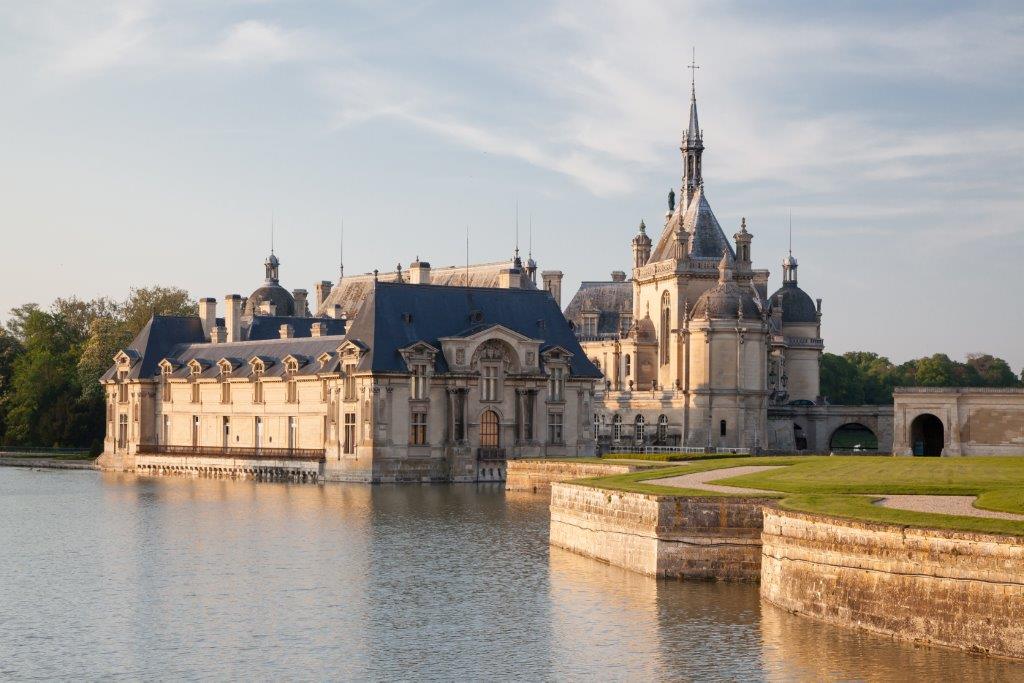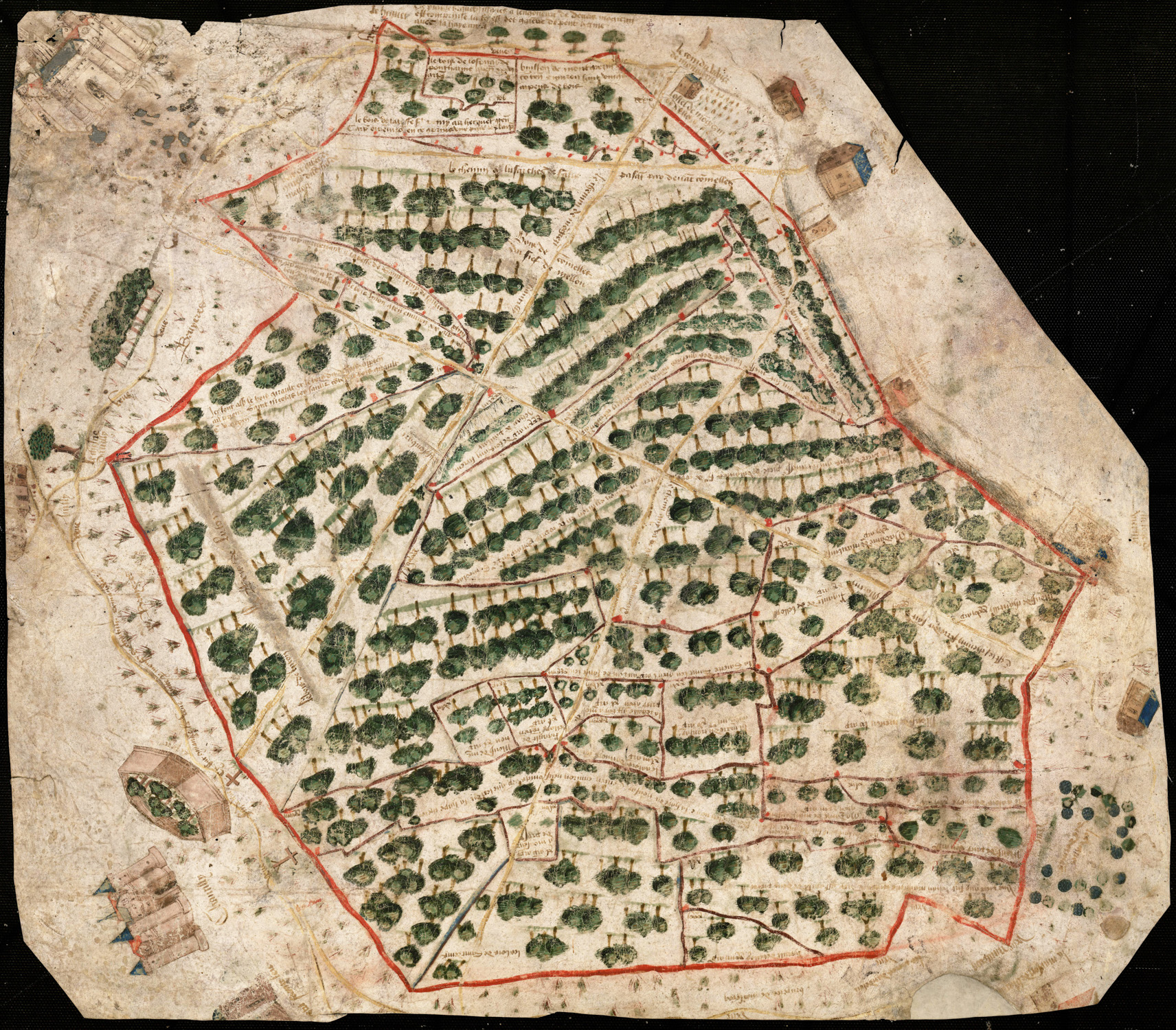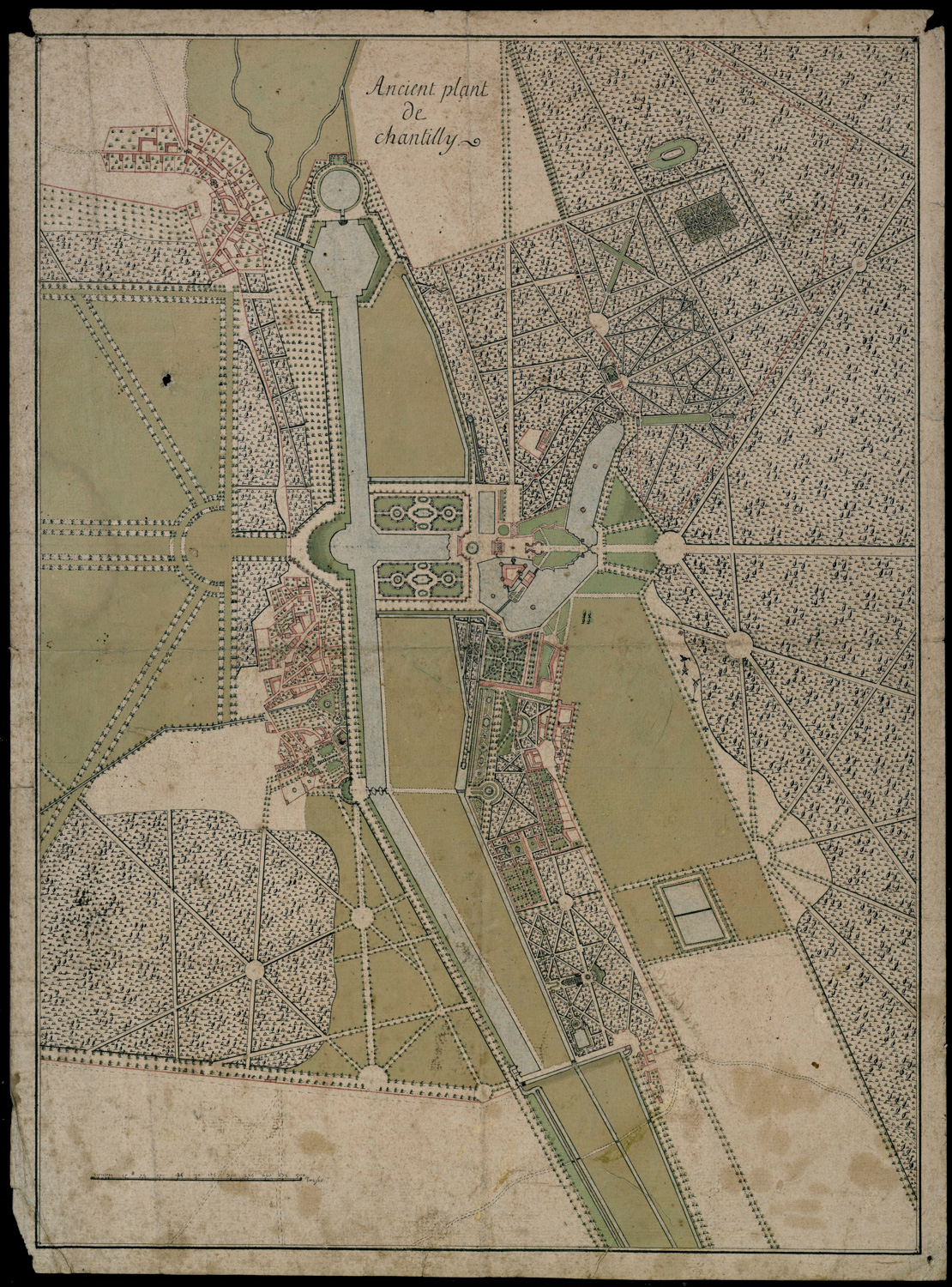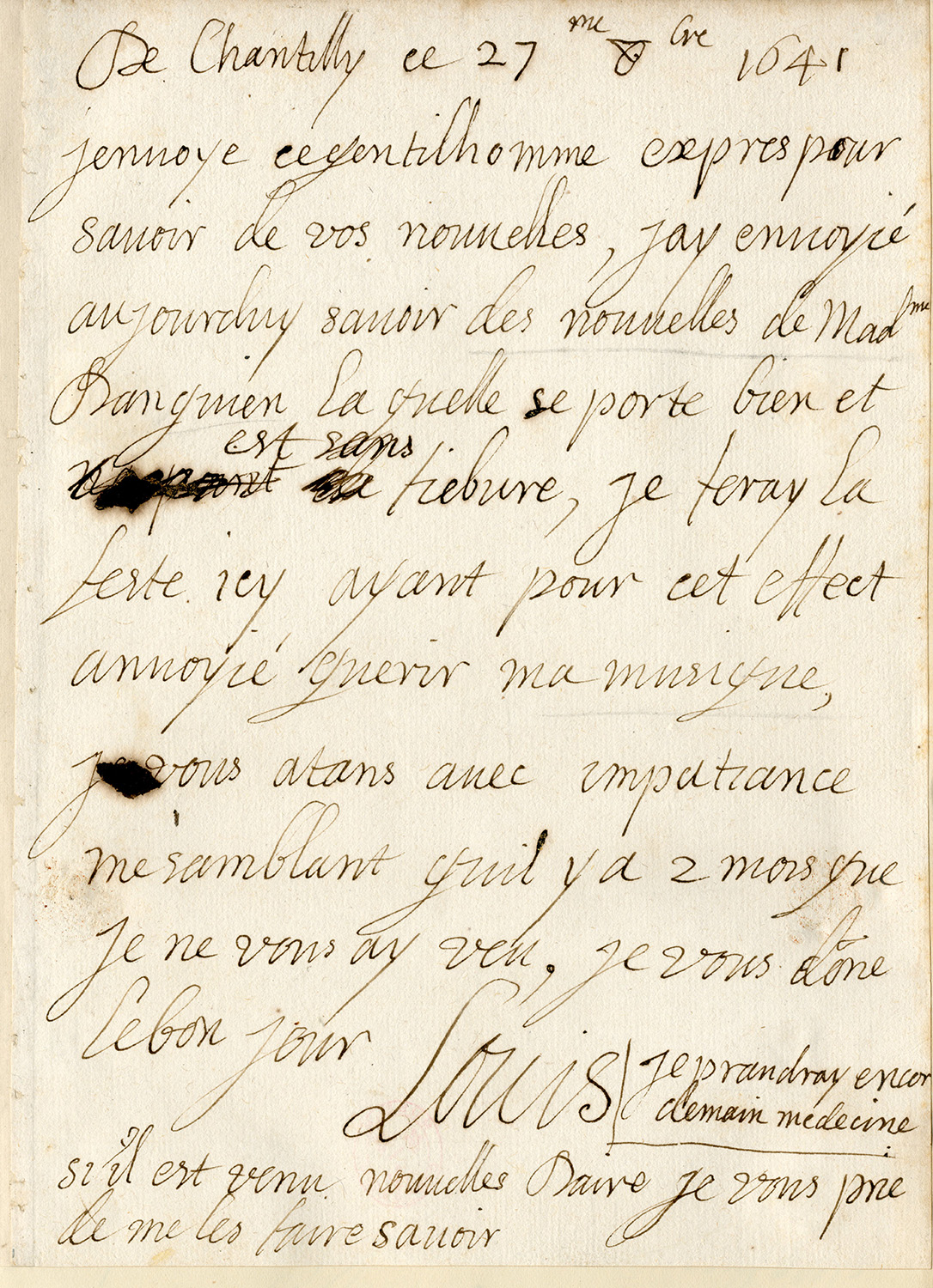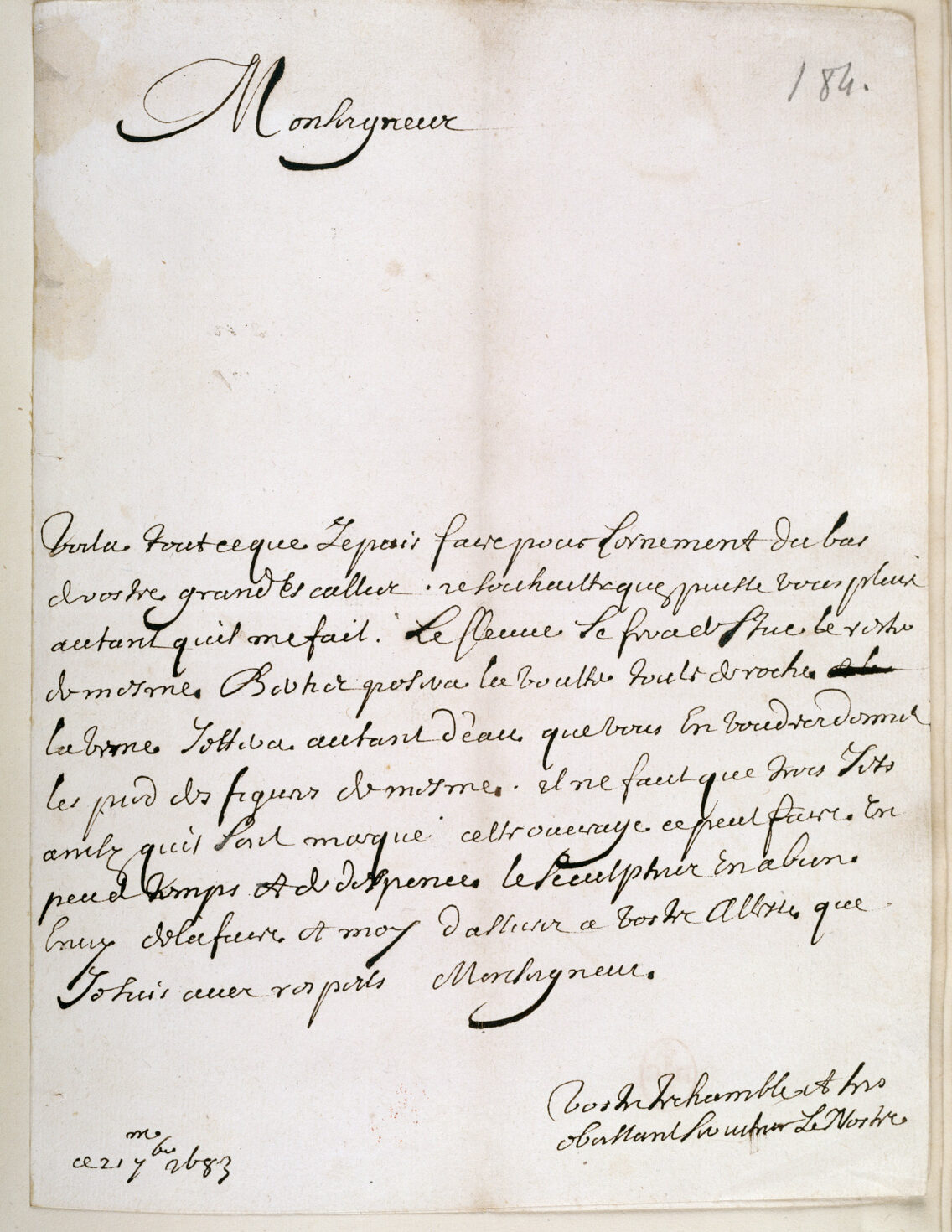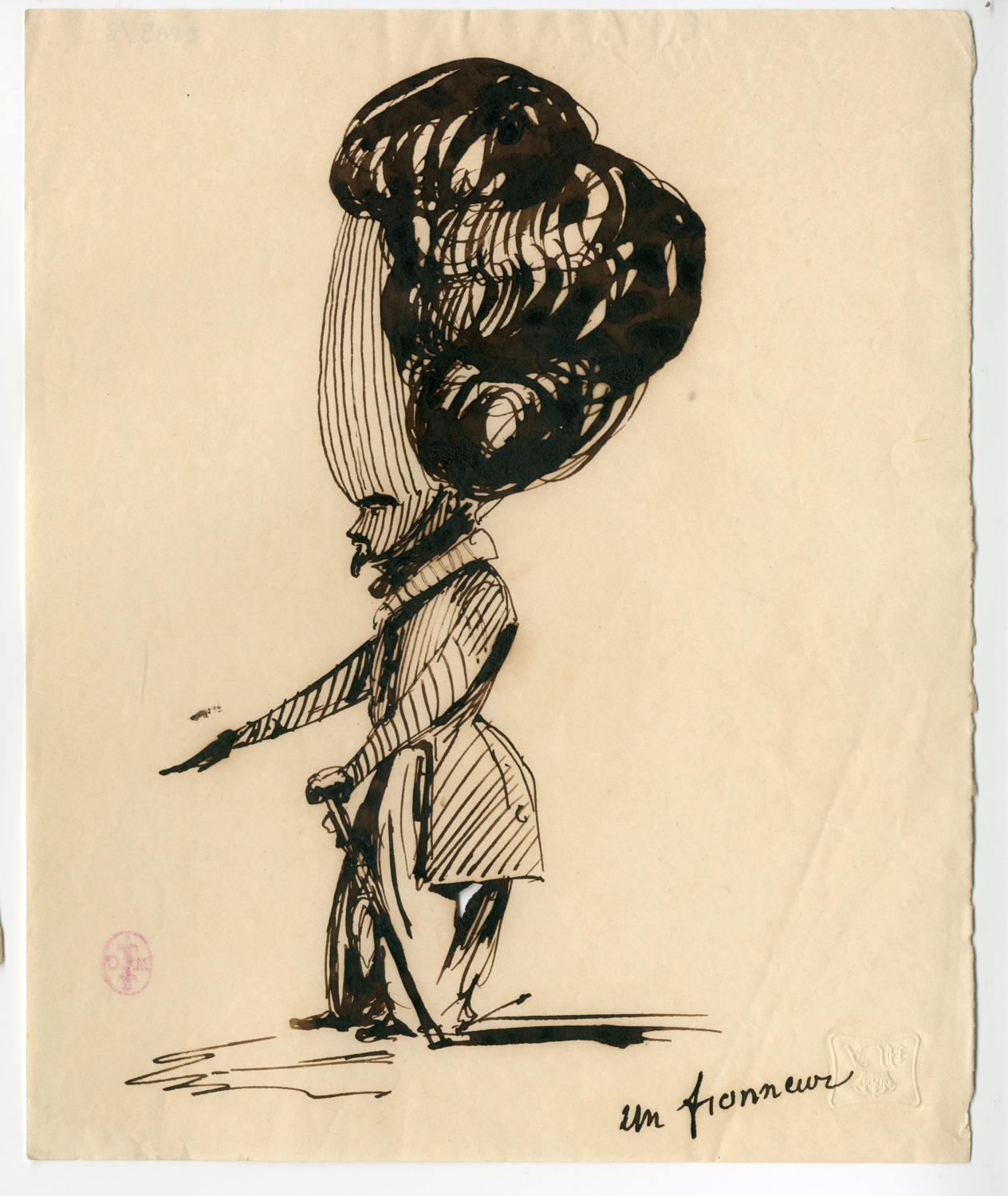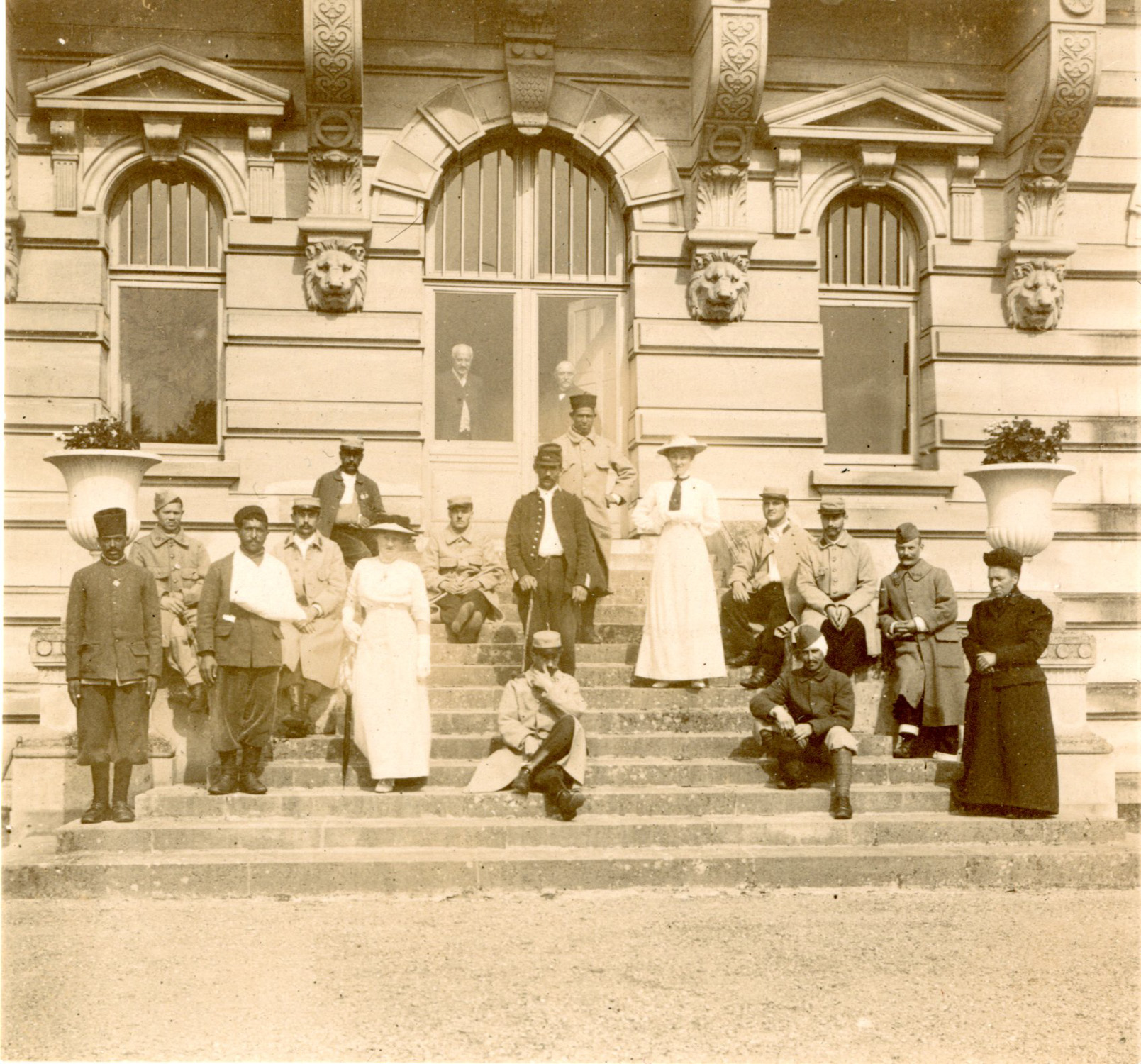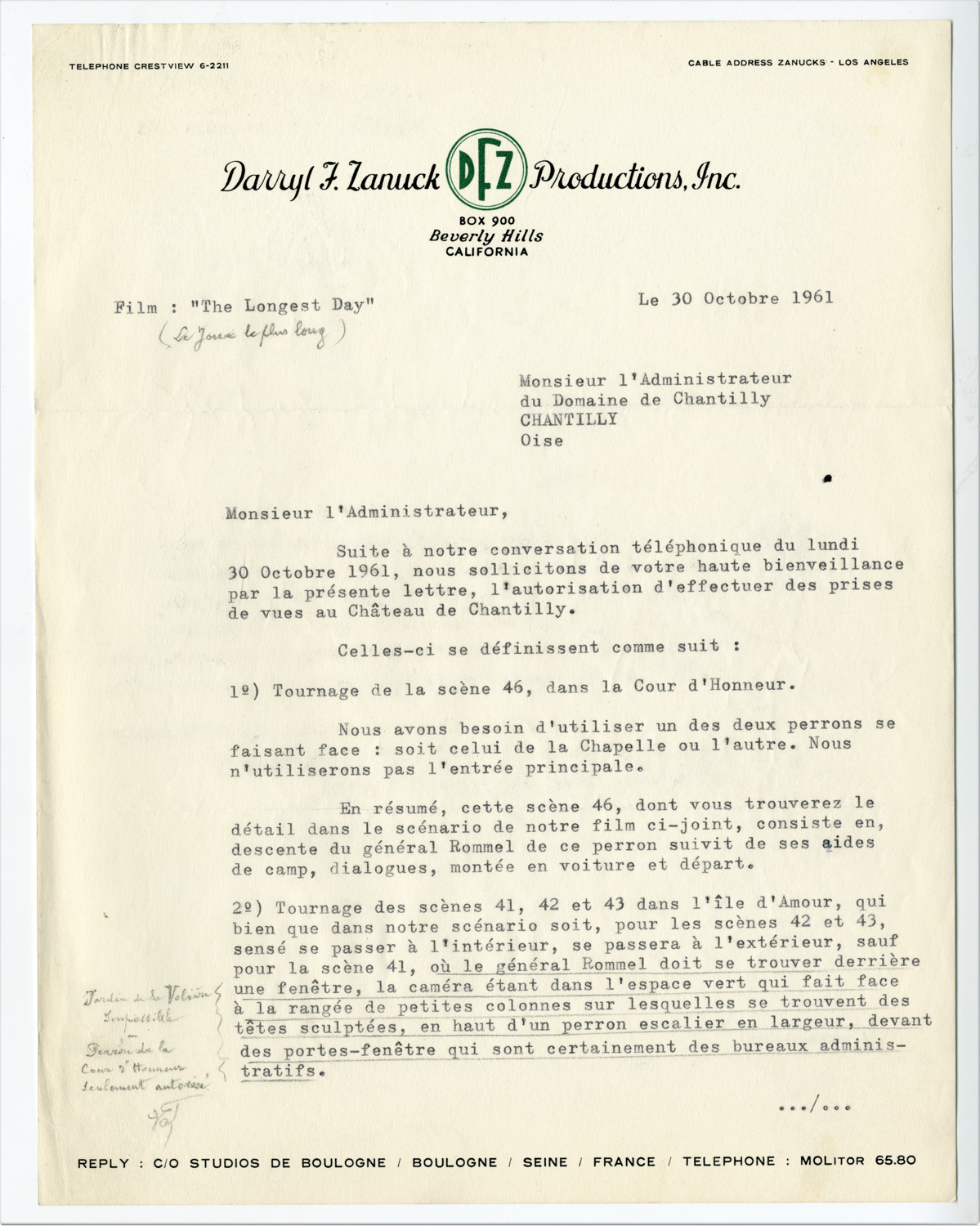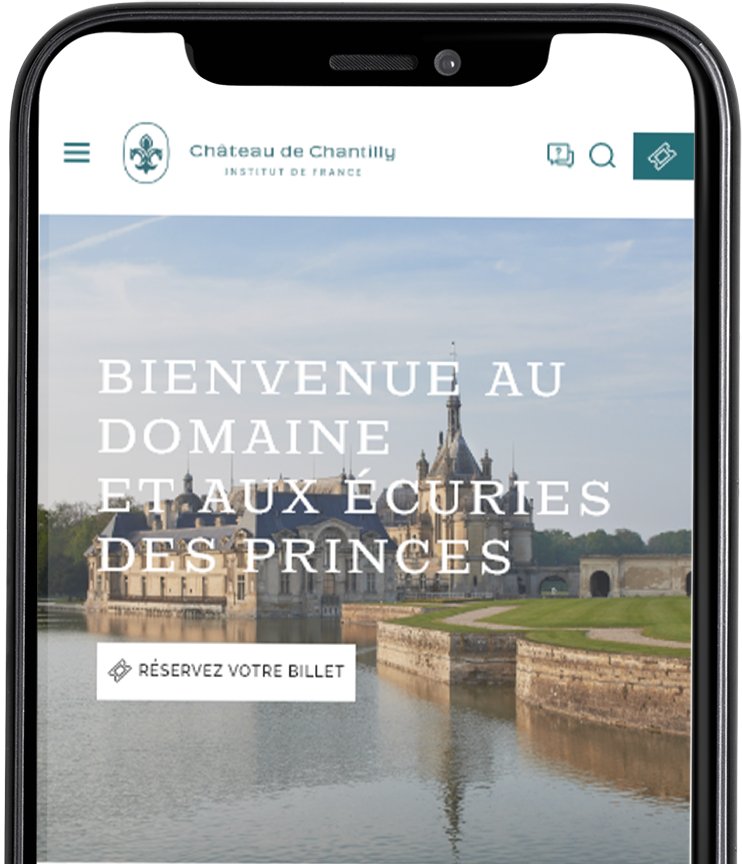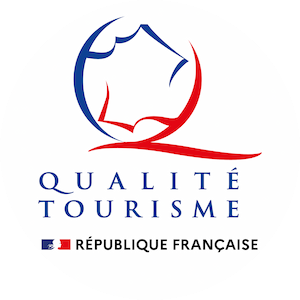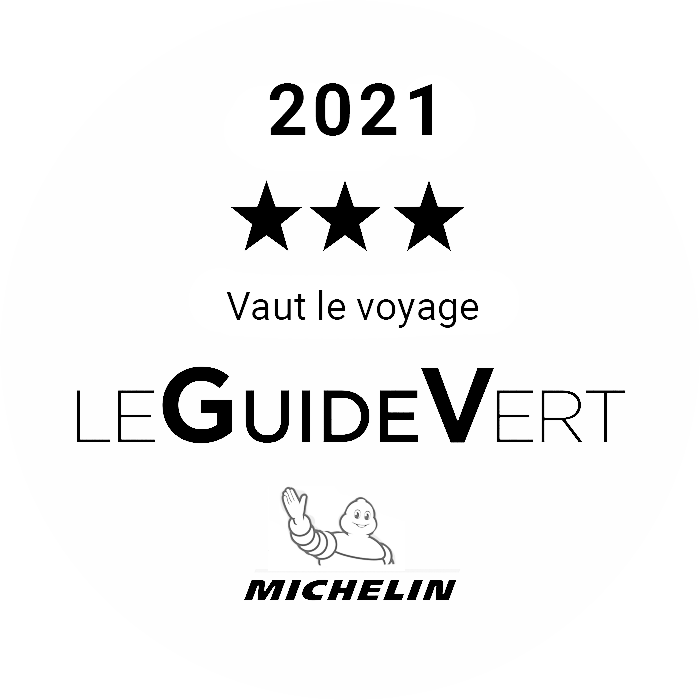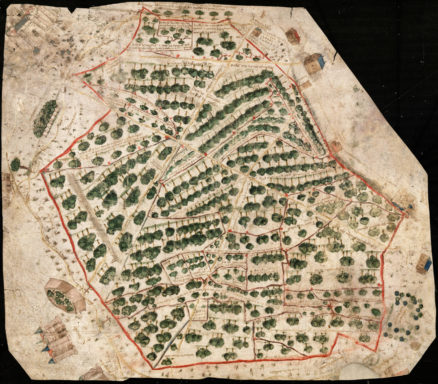
Chantilly Forest in the 15th century
Circa 1479-1480
Chantilly Forest in the 15th century - Circa 1479-1480
Hand-drawn map on parchment, (63.5 cm X 72.5 cm)
The Maps Room, CP-C-0082
“C’est la figure de la forest de Chantilly faicte a la requeste de hault et puissant seigneur Monseigneur le comte de Dampmartin maistre dostel de France, Jehan de Chasnannes, escuier, son filz, et les religieux du couvent de Chaslis avec eulx adioincte deffendeurs contre messire Pierre Dorgemont chevalier seigneur de Chantilly demandeur et complaignant.”
Produced for a trial, this is the oldest known depiction of Chantilly Forest. The gruerie, in the centre, is delineated by a red line. Milestones, paths, the surrounding villages and the Château de Chantilly are all featured.
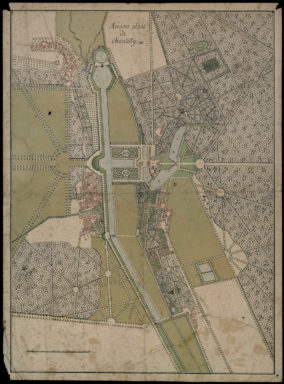
The Domaine de Chantilly in the 17th century
17th century
The Domaine de Chantilly in the 17th century - 17th century
Old map of Chantilly
Waterproof map on paper, (62 cm X 46 cm)
The Maps and Plans Room, CP-B-0075
Architects, gardeners and topographers regularly depicted the domain of the Condé princes. These maps are precious as they show the appearance of the domain which was greatly changed after the French Revolution. Only Le Nôtre’s flowerbeds remain in the axis of the Grand Château.
After 1682, this map attributed to Jean-Nicolas Breteuil, the Prince of Condé’s surveyor, shows the entire Domaine de Chantilly at the period straddling the 17th and 18th centuries. The Great Stables, the Château d’Enghien and the Jeu de Paume had not yet been built.
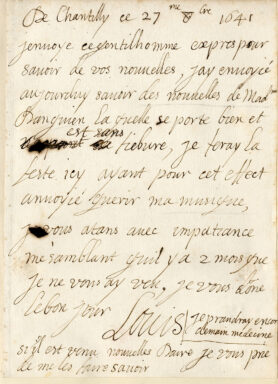
Letter from Louis XIII to Cardinal de Richelieu
27 October 1641
Letter from Louis XIII to Cardinal de Richelieu - 27 October 1641
Autograph letter signed, on paper
The Letters Room, series I, III fo 389
On 27 October 1641, Louis XIII (1601-1643) wrote from Chantilly giving Cardinal de Richelieu (1585-1642) news of the health of “Madame d’Enghien”, Charlotte-Marguerite de Montmorency, Princess of Condé (1594-1650).
It was she who should have owned Chantilly, but the domain was confiscated in retaliation to conspiracies by her brother Henri II de Montmorency, who was executed in 1632. The king liked Chantilly, where he could indulge his passion for hunting and hold parties.
In 1643, after the king’s death and his son’s victory at Rocroi, Chantilly was returned to the Princess of Condé by order of the Regent Queen Anne of Austria.
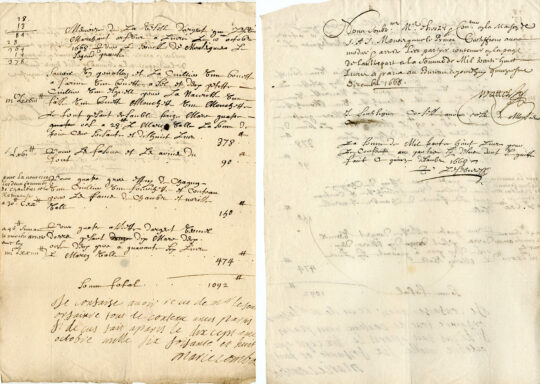
François Vatel, the Great Condé’s maître d’hôtel
1668
François Vatel, the Great Condé’s maître d’hôtel - 1668
Mémoire de la veselle dargent que Lefebvre marchant orfebvre a livré le 10me octobre 1668…
Handwritten bifolio leaf, in-2° format
The Condé Papers (Deeds Room), 1-AB-001
This list of silver tableware delivered on 10 October 1668 for the dining service of Louis II de Bourbon-Condé, known as the Great Condé (1621-1686), is signed “Wattel”.
It is one of the rare traces of the housekeeper François Vatel (1631-1671) who at the time was acting as the prince’s maître d’hôtel.
Less than three years later, on 24 April 1671, while a party organised for Louis XIV (1638-1715) and his Court was taking place, Vatel died by suicide at the Château de Chantilly.

André Le Nôtre, the creator of the Great Condé’s gardens
21 September 1683
André Le Nôtre, the creator of the Great Condé’s gardens - 21 September 1683
Handwritten signed letter on paper, in-4° format
The Condé Papers (The Letters Room), series P, XCII, fo 184
André Le Nôtre (1613-1700) was the ingenious creator of the gardens in Chantilly, which, at the time this letter was written, were being completed after twenty years of work.
Letters from Le Nôtre, who was very occupied in Versailles, are rare in the Chantilly archives. In this one, Le Nôtre tells Louis II de Bourbon Condé, known as the Great Condé (1621-1686), about the architectural projects he is planning for either side of the Grand Degré, the monumental stone staircase leading from the Connétable terrace to the gardens: finely sculpted and decorated arches that will house water jets and large statues.
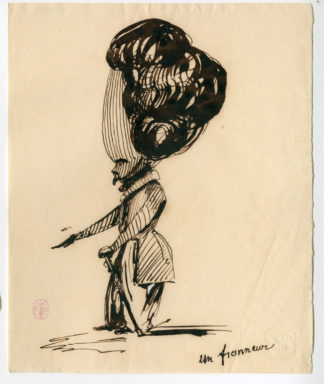
Henri d'Orléans, the Duke of Aumale’s talent for caricature
Circa 1830-1840
Henri d'Orléans, the Duke of Aumale’s talent for caricature - Circa 1830-1840
Ink drawing on paper, (20 cm X 16 cm)
Aumale papers, 2-PA-014(8)
On a recommendation from Baron Gérard, King Louis-Philippe chose the Romantic painter Ary Scheffer as his children’s drawing teacher.
Some years later, during his studies at the Henri IV secondary school in the years 1830-1840, it was with great ease that Henri d’Orléans, Duke of Aumale (1822-1897), drew caricatures using a quill and ink of his teachers or members of his entourage, including his family.
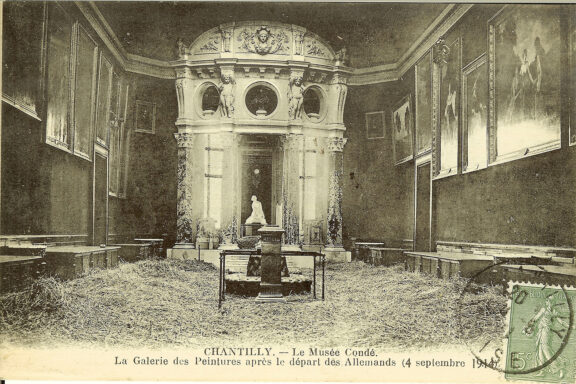
The Condé Museum in September 1914
Circa 1914
The Condé Museum in September 1914 - Circa 1914
The Gallery of Paintings after the Germans’ departure (4 September 1914)
Post card
This post card shows the condition of the Gallery of Paintings in the Condé Museum on 4 September 1914, after the Germans had occupied the château for the night.
The wooden floors in the Stag Gallery, the Gallery of Paintings, the Tribune and the Logis were still covered with the straw laid out as bedding for the troops.
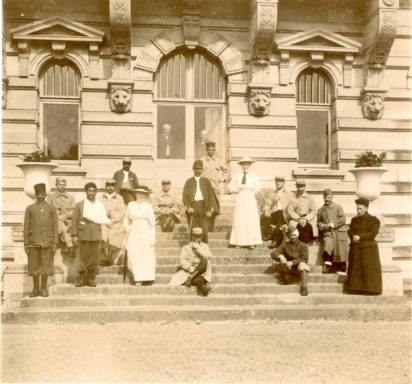
The Domaine de Chantilly and the Great War
July 1915
The Domaine de Chantilly and the Great War - July 1915
Madame Jérardin and wounded soldiers at Gouvieux hospital
Anonymous photograph
Contemporary archives, 4-WA-022
This photograph, taken in July 1915, shows the benefactresses of Gouvieux hospital in the Oise region accompanying several French soldiers convalescing at the Château de Chantilly.
The group is posing in the Jardin de la Volière, on the steps leading to the Research Reading Room.
In 1915, and during the entire Great War, soldiers convalescing in hospitals in Chantilly and the surrounding areas found comfort in the pathways of the grounds and galleries of the château.
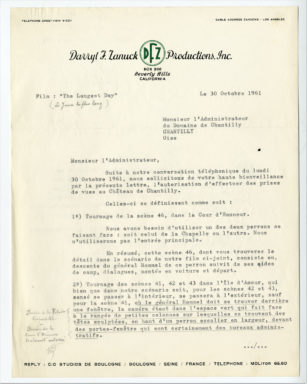
The Longest Day in Chantilly
November 1961
The Longest Day in Chantilly - November 1961
Extract from a typed film script
Contemporary archives, 5W154
In 1962 the château featured in the film The Longest Day, for which scenes 41, 42, 43 and 46 were shot at the Domaine de Chantilly on 8 and 9 November 1961.
The archives in the château hold a part of the script for these scenes, shot on one of the porches of the Logis and on the island of Love. Authorisation to film in the Jardin de la Volière was not granted.

